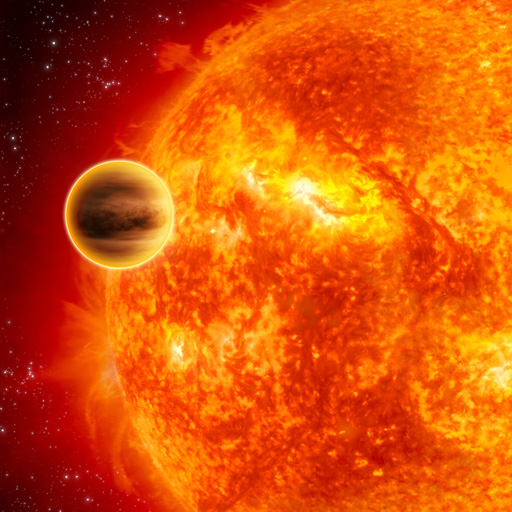Detection and characterization
 Our current understanding of the structure and evolution of exoplanets is mainly supported by the discovery and characterization of those which transit in front of their parent stars. The main parameter we can obtain from transiting planets is their radii, which coupled with the estimation of their masses, via radial velocity (RV) measurements, can be used to compute their bulk density, giving us insights on their internal structures. Whilst substantial progress has been made over the past decade in discovering and obtaining precise mass and radius measurements for many transiting exoplanets, most of the well-characterized planets are hot Jupiters, i.e. giant planet with M > 0.3 M_Jup and P_orb < 10 day orbiting F, G and K stars. Finding and characterizing more small planets around bright stars will enable studies of the transitions from gas giant planets to ice giants and then to rocky planets.
Our current understanding of the structure and evolution of exoplanets is mainly supported by the discovery and characterization of those which transit in front of their parent stars. The main parameter we can obtain from transiting planets is their radii, which coupled with the estimation of their masses, via radial velocity (RV) measurements, can be used to compute their bulk density, giving us insights on their internal structures. Whilst substantial progress has been made over the past decade in discovering and obtaining precise mass and radius measurements for many transiting exoplanets, most of the well-characterized planets are hot Jupiters, i.e. giant planet with M > 0.3 M_Jup and P_orb < 10 day orbiting F, G and K stars. Finding and characterizing more small planets around bright stars will enable studies of the transitions from gas giant planets to ice giants and then to rocky planets.
The core-accretion model of planet formation suggests that the rapid accumulation of gas after a proto-planet reaches a critical size should result in a dearth of planets with masses between Neptune and Saturn (Mordasini et al., 2009). We also expect the atmospheric composition of Neptunes to be qualitatively different from gas giants, with much higher concentrations of volatiles and heavy elements. Recent measurements of transmission spectra of exo-Neptunes and exo-Saturns (e.g. Wakeford et al., 2017) have hinted at such a trend, but many more planets are needed to confirm this.
Finding these planets and characterizing their properties to determine their core sizes, atmospheric compositions and orbital orientations provides a key test of these models. Finding and characterizing more planets with periods longer than 10 days is also critical for studying the physical properties of planets that are on sufficiently wide orbits to not be affected by extreme stellar irradiation. Theoretical arguments, supported by observations, indicate that the radii of planets around FGK stars with periods longer than 10 days are independent of the received irradiation (Thorngren et al., 2016). This makes it possible to reliably determine the core masses of these planets, and search for correlations with other parameters (e.g., host metallicity), to test planet formation theories. The orbits of these planets are also expected to be unaffected by tides, making measurements of their orbital orientations particularly valuable tests of planet migration models.
We are involved in several collaborations, including HATSouth, which uses a network of identical, fully automated wide field telescopes, for detecting new transiting exoplanets; GAPS, which is undertaking a challenging observational program to characterize the global architectural properties of exoplanetary systems, by using the high-resolution spectrograph HARPS-N; EDEN, which is carrying out the most sensitive transit survey in the northern hemisphere with the aim to find habitable planets within 50 lightyears. CARMENES, which is carrying out a survey of 300 late-type main-sequence stars with the goal of detecting low-mass planets in their habitable zones; and MiNDSTEp, which exploits the technique of gravitational microlensing to study the population of planets in the Galaxy.
We are also leading an observational program to accurately measure the characteristics of known exoplanet systems hosting close-in transiting giant planets. Our study is based on high-quality photometric follow-up observations of transit events with an array of medium-class telescopes. A high photometric precision is achieved through the telescope-defocussing technique. The data are then reduced and analysed in a homogeneous way for estimating the orbital and physical parameters of both the planets and their parent stars. We also make use of multi-band imaging cameras for probing planetary atmospheres via the transmission-photometry technique. In some cases we adopt a two-site observational strategy for collecting simultaneous light curves of individual transits, which is the only reliable method for truly distinguishing a real astrophysical signal from systematic noise.
Related Researchers
L. Mancini
